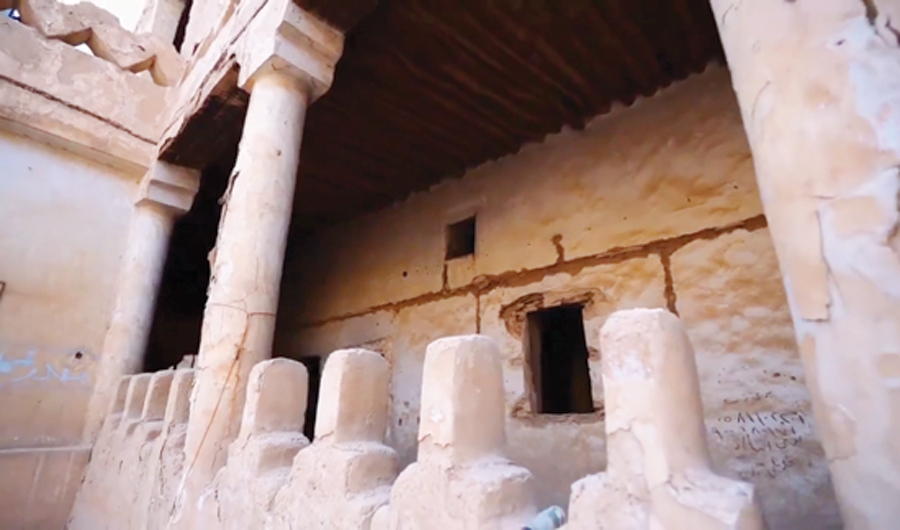
Al-Fouta’s facelift: Riyadh’s historical district slated for renovation
by Hala Tashkandi- The association is focused on attracting youth interested in the field to serve their country through an integrated system
- Prince Badr said that the restoration process will meet international standards for the restoration of historic buildings
RIYADH: A major project is set to bring back the glory of 15 old palaces in the Kingdom’s capital.
The work is part of broader restoration work in the historical districts of central Riyadh, Prince Badr bin Abdullah bin Farhan, Minister of Culture and Chairman of the Heritage Authority, announced on Sunday.
Managed by the Ministry of Culture, represented by the Heritage Authority, in partnership with the Royal Commission for Riyadh and the Riyadh municipality, the project comes as part of King Salman’s keenness to preserve Saudi heritage and falls under the direction of Crown Prince Mohammed bin Salman.
From 15 palaces, seven in the western district of Al-Fouta date back to 1944, while three in eastern Al-Fouta date back to 1935. The project will also restore five royal palaces: King Fahd Palace, King Abdullah Palace, Princess Haya bint Abdulrahman Palace, Prince Sultan Palace, and Princess Al-Anoud Palace in Dhahira, Al-Fouta, and Umm Salim districts.

The district of Al-Fouta has a charming, antiquated atmosphere that transports the visitor into another era. Here you’ll find the oldest park in Riyadh, Al-Fouta Park, and the historic Red Palace, which was a gift to King Saud from the Kingdom’s founding father, King Abdul Aziz, which opened its doors as a museum in March of last year, as well as mosques and government offices.
FASTFACTS
• The district of Al-Fouta has a charming, antiquated atmosphere that transports the visitor into another era. Here you’ll find the oldest park in Riyadh, Al-Fouta Park, and the historic Red Palace, which was a gift to King Saud from the Kingdom’s founding father, King Abdul Aziz, which opened its doors as a museum in March of last year, as well as mosques and government offices.
• The work, which envisages the comprehensive restoration of the buildings in two phases over 24 months, starting in January 2021, will commence by conducting a complete study of all heritage buildings of importance in the center of Riyadh.
The buildings are sorely in need of repair to restore them to their former glory, experts say. Rana Alkadi, a specialist in heritage architecture, said that the project will contribute significantly to the preservation of Saudi culture.
“Reviving the heart of Riyadh city heritage will preserve its identity and enhance its historical cultural bonds to the past,” she said.
Saudi historian Majed Al-Ahdal called the renovation “an important step forward,” emphasizing the importance of respecting and understanding one’s past to fully appreciate the future.
“I would argue that the future is open to those who know their past well and use the insights the past provides to move forward with confidence. Though renovating the buildings may seem like a purely aesthetic endeavor on the surface, architecture is one of the most fundamental ways of measuring urban progress,” he said.
“These palaces oversaw countless important events and dates, and thus fully deserve to be restored to their former glory.”
Prince Badr expressed his gratitude for the support provided by King Salman and Crown Prince Mohammed bin Salman to the culture and heritage sector.
In a press statement issued today, the minister said that the restoration process will meet international standards for the restoration of historic buildings.
The work, which envisages the comprehensive restoration of the buildings in two phases over 24 months, starting in January 2021, will commence by conducting a complete study of all heritage buildings of importance in the center of Riyadh.
The project aims to preserve the heritage buildings of architectural and historical importance and transform them into an economic, social, cultural, and tourism resource, reasserting their cultural identity in the context of the history of Riyadh.
The ministry’s efforts to preserve Saudi architectural heritage have increased significantly over the past year.
On Thursday, Prince Badr announced in a tweet that: “Having previously won membership on both UNESCO’s Executive Board and the World Heritage Committee, Member States have now elected KSA for membership of the Intangible Cultural Heritage Committee.”
In 2019, Arab News reported that SR50 million ($13.33 million) had been pledged by Crown Prince Mohammad bin Salman to support the restoration of Jeddah’s historic Al-Balad district, a UNESCO Cultural Heritage site.